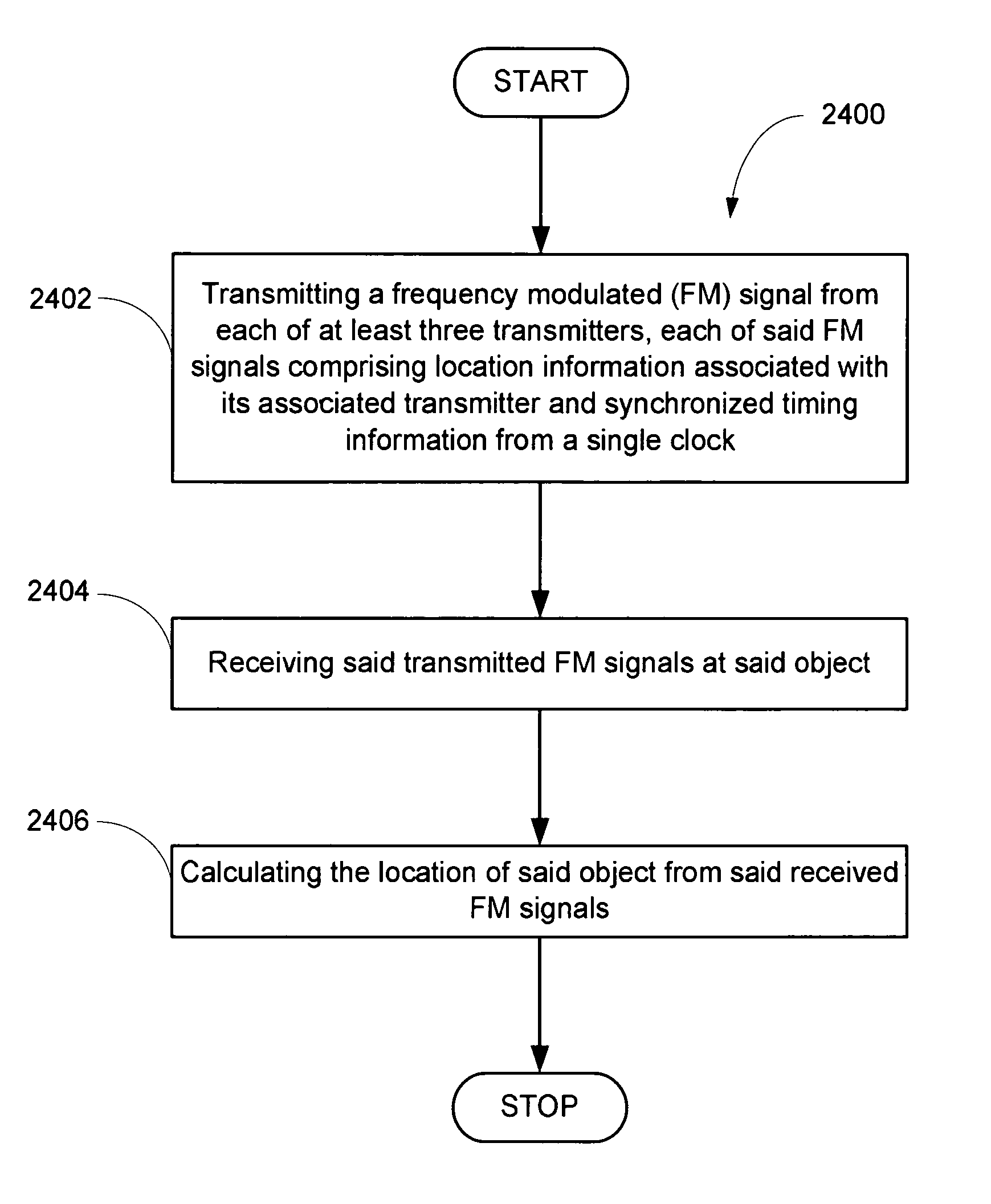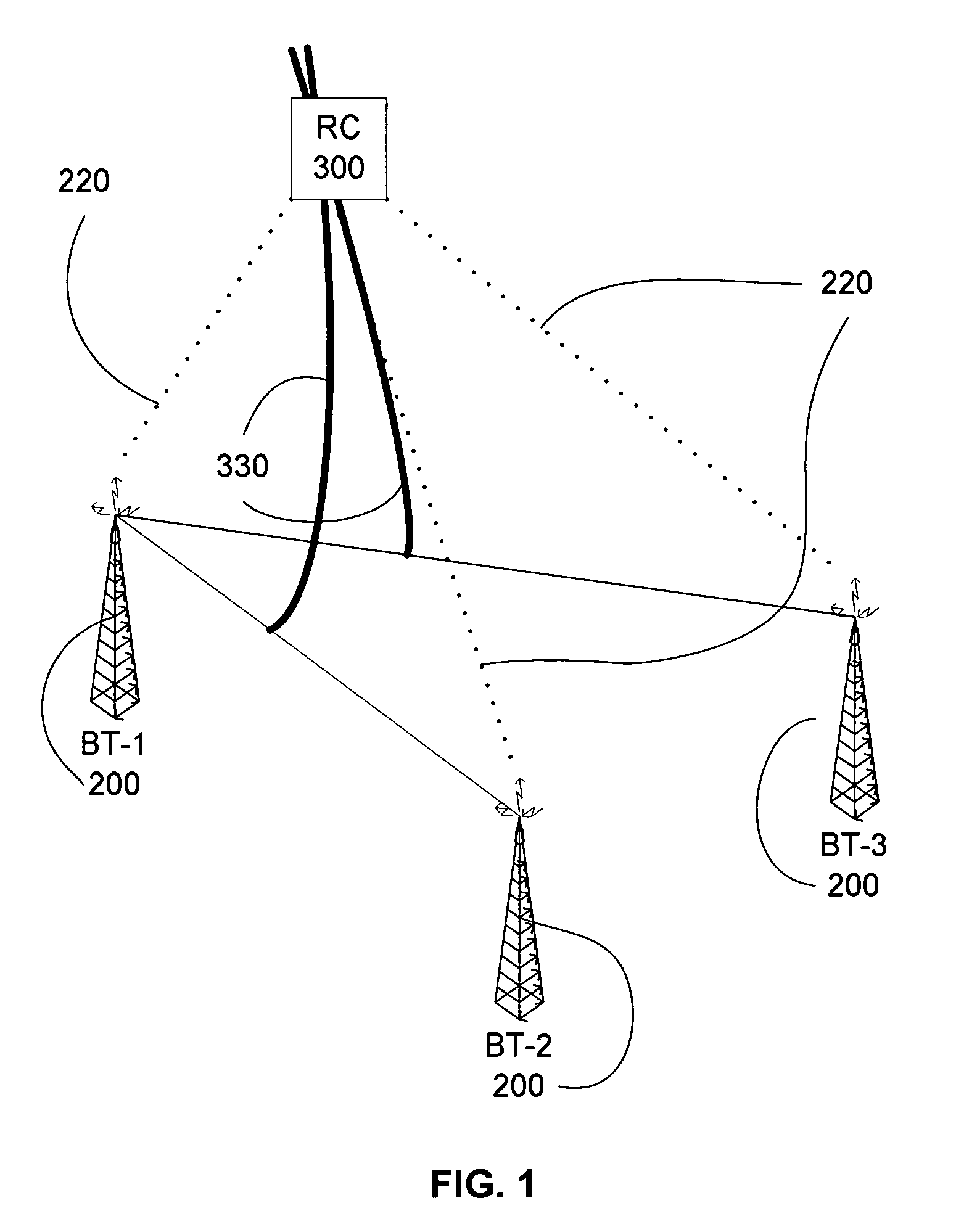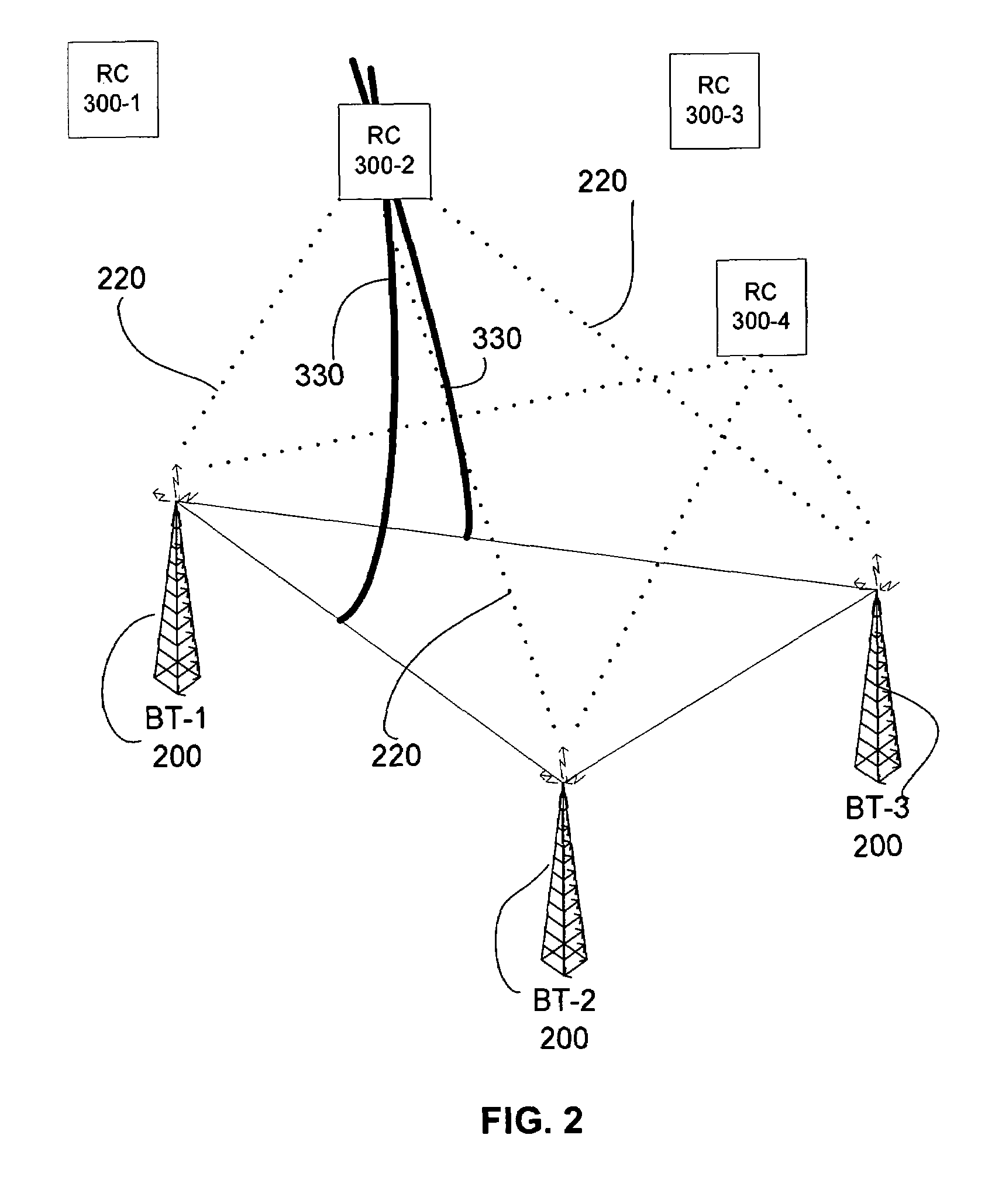Method and apparatus for location determination of people or objects
a technology for location determination and people or objects, applied in direction finders, direction finders using radio waves, instruments, etc., can solve the problems of reducing tracking accuracy, multiple story buildings posing additional obstacles for tracking, and difficult or even impossible to cover large steel and concrete buildings, etc., to facilitate the portability of transmitter nodes, reliable and accurate location determination, the effect of enhancing the angular geometry of transmission
- Summary
- Abstract
- Description
- Claims
- Application Information
AI Technical Summary
Benefits of technology
Problems solved by technology
Method used
Image
Examples
Embodiment Construction
[0051]This present invention may utilize three or more geographically-dispersed transmitter nodes (hereinafter called a “BT node”). Each BT node may consist of an FM transmitter, a high-precision timing source (optional), high-precision location determination device (optional), FM receiver (optional), and computer processor, according to embodiments of the present invention. See FIG. 3 for a block diagram of an embodiment of a BT node.
[0052]The present invention may also include one or more Receiver nodes (hereinafter called “RC” node). Each RC node monitors 3 or more BT channels—the RC node may choose channels according to any specific criteria. Two possible examples of BT selection are: (1) monitoring those channels that exhibit the “strongest” signal, or (2) acquiring signals based upon the locations of their source BT nodes.
[0053]Each RC node (see FIG. 4 for a block diagram of an embodiment of an RC node) calculates the Time Difference of Arrival (TDOA) between each pair of BT s...
PUM
 Login to View More
Login to View More Abstract
Description
Claims
Application Information
 Login to View More
Login to View More - R&D
- Intellectual Property
- Life Sciences
- Materials
- Tech Scout
- Unparalleled Data Quality
- Higher Quality Content
- 60% Fewer Hallucinations
Browse by: Latest US Patents, China's latest patents, Technical Efficacy Thesaurus, Application Domain, Technology Topic, Popular Technical Reports.
© 2025 PatSnap. All rights reserved.Legal|Privacy policy|Modern Slavery Act Transparency Statement|Sitemap|About US| Contact US: help@patsnap.com



